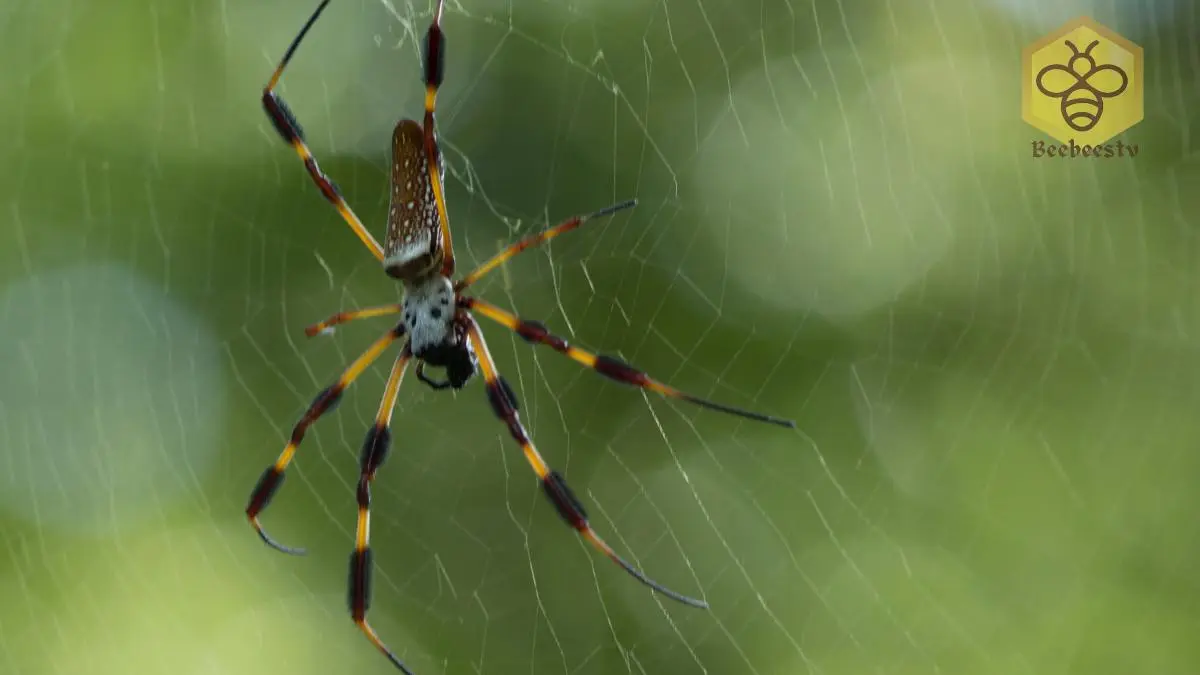Banana spiders, with their large size and striking appearance, are a fascinating group of arachnids found in tropical and subtropical regions worldwide. Often associated with their golden-colored webs, these spiders play a vital role in their ecosystems as predators and pollinators.
Table of Contents
Scientific Name
Trichonephila clavipes (One of the most common species)
Common Names
Golden Silk Orb-Weaver, Banana Spider
Scientific Classification
| Domain | Eukaryota |
| Kingdom | Animalia |
| Phylum | Arthropoda |
| Class | Insecta |
| Order | Araneae |
| Family | Araneidae |
| Genus | Trichonephila (One of the most common genera of banana spiders) |
| Species | Various species within the Trichonephila genus, such as Trichonephila clavata, Trichonephila pilipes, and Trichonephila fenestrata. |
Habitat
Tropical and subtropical regions worldwide are often found in gardens, forests, and other areas with abundant vegetation.
Physical Characteristics
- Size: Females are significantly larger than males, with a leg span of up to 6 inches (15 cm).
- Coloration: Typically golden yellow or brown, with darker markings.
- Body Shape: Females have a plump abdomen and long, spindly legs. Males are smaller and often have a more slender appearance.
Diet
- Carnivorous: They primarily feed on insects caught in their webs. Larger prey, such as small birds or lizards, may occasionally be captured.
- Hunting Method: They create large, circular webs with a distinctive zigzag pattern known as a “stabilimentum” to attract prey.
Behavior and Lifestyle
- Solitary: Banana spiders are generally solitary creatures.
- Web Building: They are skilled web-spinners, constructing intricate webs that can be several feet in diameter.
- Cannibalism: Females may sometimes consume their mates after or during mating.
Ecological Role
- Pest Control: Banana spiders help to control insect populations, including potential agricultural pests.
- Food Source: They serve as prey for various animals, such as birds, reptiles, and larger spiders.
- Pollination: While not as direct as bees, banana spiders can inadvertently aid in pollination by carrying pollen on their bodies as they move from flower to flower.
Reproduction
- Sexual Reproduction: Males and females mate, with the male often being consumed by the female after or during mating.
- Egg Sacs: Females produce large, silk egg sacs that they attach to their webs.
- Hatching: The eggs hatch into spiderlings, which remain on the web for a period before dispersing.
FAQs About Banana Spiders
1. Are banana spiders dangerous to humans?
While banana spiders can deliver a painful bite, their venom is not considered medically significant. The bite is often compared to a bee sting and may cause localized pain, redness, and swelling. However, severe allergic reactions are extremely rare.
2. Why are they called “banana spiders”?
The name comes from their association with banana plants. They are often found in tropical and subtropical regions where banana plants grow, and their large size and golden-brown coloration can resemble the fruit.
3. How big do banana spiders get?
Females are significantly larger than males. They can reach a leg span of up to 6 inches (15 cm) or more. Males are typically smaller, often measuring only a few inches in length.
4. What do banana spiders eat?
They are carnivores and primarily feed on insects caught in their webs. Their diet may include flies, moths, bees, wasps, and even small vertebrates like lizards or birds.
5. Are banana spiders beneficial to have around?
Yes, they can be beneficial to have around. They help to control insect populations, including potential pests. By capturing and consuming insects, they can reduce the need for chemical pesticides.
Conclusion
Banana spiders are remarkable creatures that have captivated the imagination of people for centuries. Their intricate webs, striking appearance, and unique behaviors make them a fascinating subject of study.
